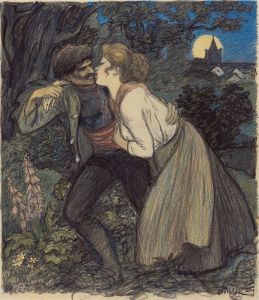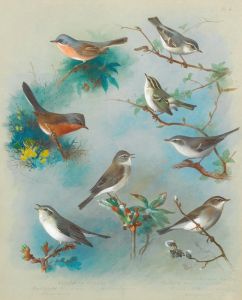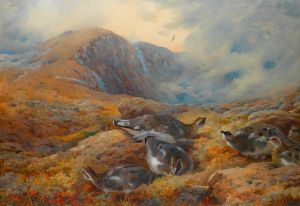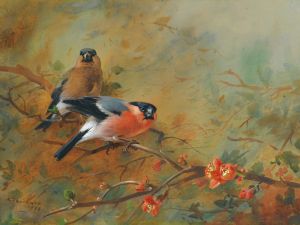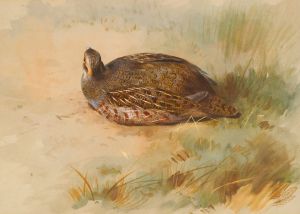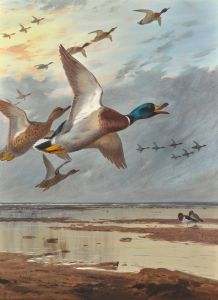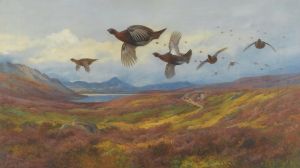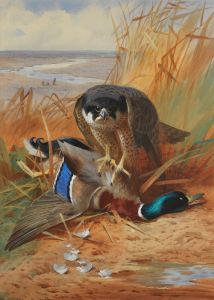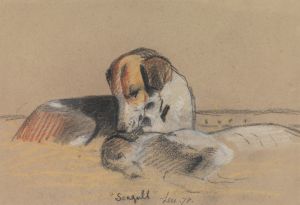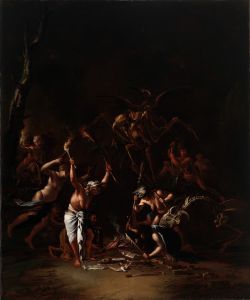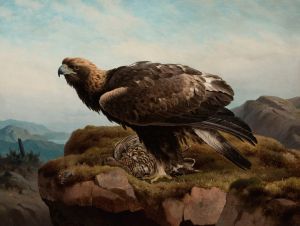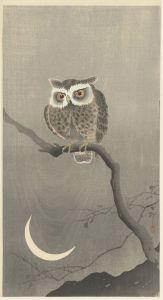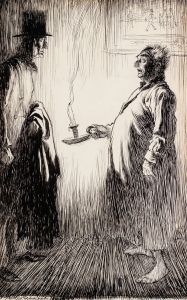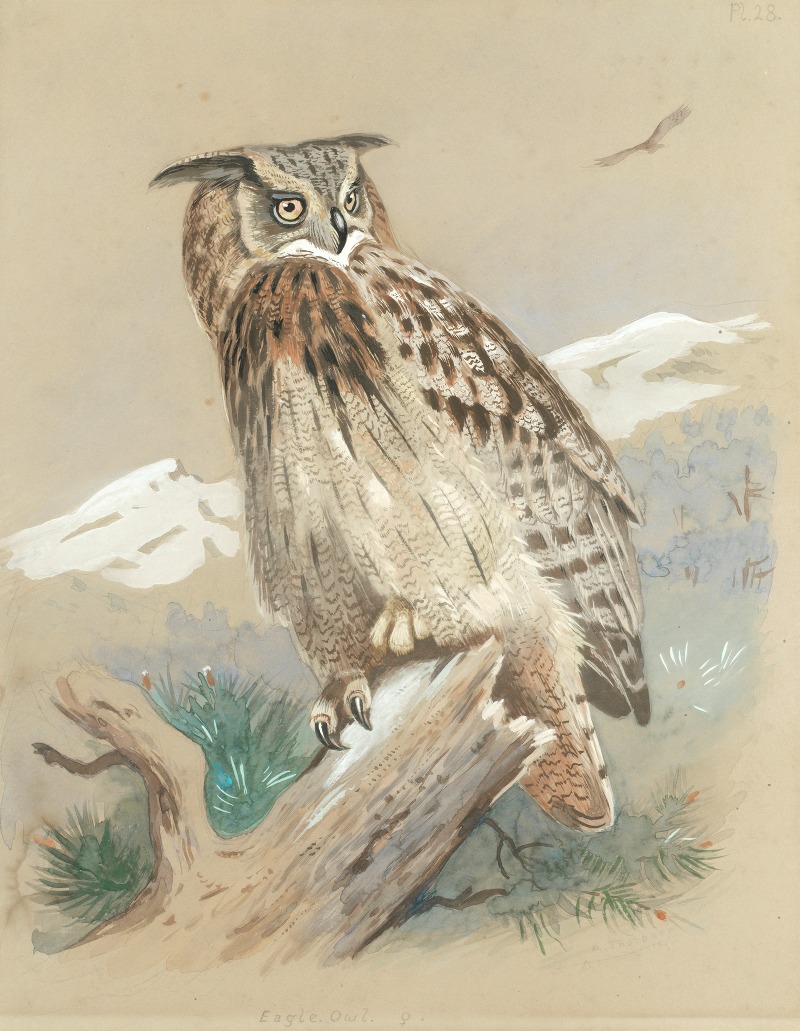
Eagle Owl
A hand-painted replica of Archibald Thorburn’s masterpiece Eagle Owl, meticulously crafted by professional artists to capture the true essence of the original. Each piece is created with museum-quality canvas and rare mineral pigments, carefully painted by experienced artists with delicate brushstrokes and rich, layered colors to perfectly recreate the texture of the original artwork. Unlike machine-printed reproductions, this hand-painted version brings the painting to life, infused with the artist’s emotions and skill in every stroke. Whether for personal collection or home decoration, it instantly elevates the artistic atmosphere of any space.
Archibald Thorburn (1860–1935) was a Scottish artist renowned for his detailed and lifelike depictions of wildlife, particularly birds. His work is celebrated for its accuracy and the ability to capture the essence of the natural world. One of his notable works is "Eagle Owl," which exemplifies his skill in portraying birds with both scientific precision and artistic flair.
Thorburn was born in Lasswade, near Edinburgh, and developed an early interest in art and nature. He studied at the St. John's Wood School of Art in London and was influenced by the works of Joseph Wolf, a prominent wildlife artist of the time. Thorburn's career gained momentum when he contributed illustrations to Lord Lilford's "Coloured Figures of the Birds of the British Isles," a significant ornithological publication.
"Eagle Owl" is a testament to Thorburn's mastery in capturing the majestic presence of this large bird of prey. The Eurasian Eagle Owl (Bubo bubo) is one of the largest species of owls, known for its striking orange eyes and prominent ear tufts. Thorburn's painting likely depicts the bird in its natural habitat, showcasing his ability to blend the subject seamlessly with its environment. His use of watercolors allowed for delicate detailing and subtle variations in color, bringing the bird to life on paper.
Thorburn's approach to wildlife art was characterized by his dedication to field observation. He spent considerable time studying birds in their natural settings, which informed the accuracy and authenticity of his work. This commitment to realism was complemented by his artistic talent, enabling him to convey the dynamic and often elusive nature of his subjects.
The "Eagle Owl" painting reflects Thorburn's broader contribution to wildlife art during a period when interest in natural history was burgeoning. His works were not only appreciated for their aesthetic qualities but also valued as educational tools that provided insight into the avian world. Thorburn's illustrations appeared in numerous books and periodicals, cementing his reputation as a leading wildlife artist of his time.
Thorburn's legacy continues to influence contemporary wildlife artists, and his paintings remain popular among collectors and art enthusiasts. His ability to merge scientific observation with artistic expression set a standard for wildlife art that endures to this day. While specific details about the "Eagle Owl" painting, such as its creation date or current location, may not be widely documented, the work itself is representative of Thorburn's enduring impact on the field of wildlife art.
In summary, Archibald Thorburn's "Eagle Owl" is a prime example of his skill in depicting birds with both accuracy and artistry. Through his dedication to observing nature and his exceptional talent, Thorburn created works that continue to captivate audiences and inspire future generations of wildlife artists.





